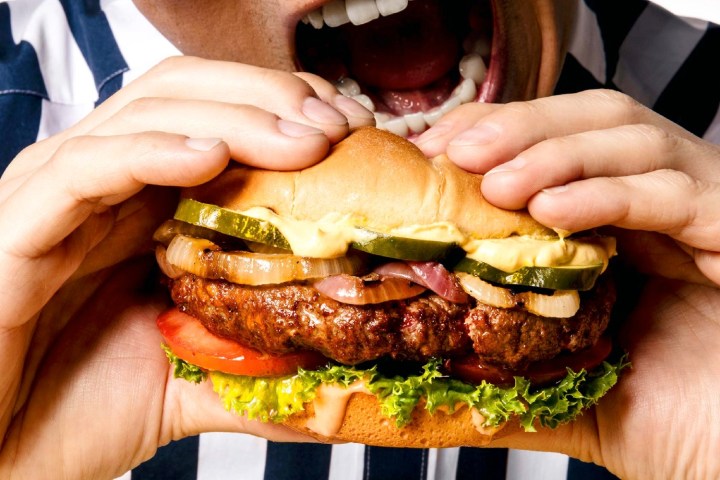
While veggie burgers have, of course, been served in dining establishments for years — often inspiring smug or pitying looks from the more carnivorous patrons — this particular burger earns its spot on Digital Trends’ “Cool Tech” page by virtue of tasting and behaving remarkably like real beef — even down to the blood.
That’s thanks to the secret ingredient of heme, a molecule which is more commonly used to give blood both its red color and iron flavor (think hemoglobin!). Thanks to heme, Impossible Burgers taste infinitely more meaty than the mocking vegetable “patty” normally served to us plant-eaters. Best of all, while it delivers comparable protein and iron to conventional beef, it contains no cholesterol, hormones, or antibiotics. Last but not least, producing the Impossible Burger requires just one-quarter of the water used to produce the same burger from a cow, a twentieth of the land, and an eighth of the greenhouse gas emissions.
“I was genuinely blown away when I tasted the burger,” said chef and founder of Momofuku, David Chang in a statement. “The Impossible Foods team has discovered how to re-engineer what makes beef taste like beef. We’re always looking to support people who are making the best products in the best ways possible and to me, the Impossible Burger is one more example. First and foremost, we think this makes a delicious burger.”
The Impossible Burger is being served in limited quantities at Momofuku’s west side of Manhattan restaurant during lunch, brunch and dinner service, starting today. It’s served on a Martin’s potato roll with shoestring fries, and is topped with romaine, beefsteak tomato, pickles, special sauce and optional cheese.
It won’t stay in just New York for long, either. Plans are also afoot for the pseudo-meat stuff to arrive at an as-yet-undisclosed San Francisco venue this fall.
Will someone let me know if it’s time to break for lunch yet?


